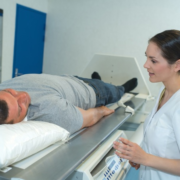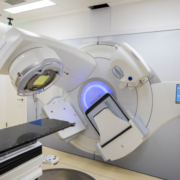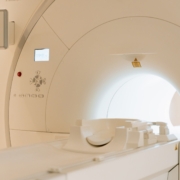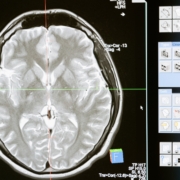Why Oligometastatic Prostate Cancer Is Now More Treatable
… and using stereotactic radiotherapy makes it well tolerated and highly effective
By Amethyst Radiotherapy Vienna
Prostate cancer is one of the most common forms of cancer in men and incidences of it are rising. Across Europe, 30 million men alive now will receive a diagnosis of the disease in their lifetime, with 75,000 dying each year.
The number of diagnoses in the EU and EFTA has doubled since 1995, with the causes of this being uncertain. By 2018 more than a fifth of cancer cases in men were of the prostate, highlighting the need for oncologists to respond.
Curiously, the levels of prostate cancer varied markedly between countries, with Romania lowest at just 63.6 per 100,000 to Sweden’s rate of 211.6. The average figure was 151.2.
In comparison, Austria had a much lower rate of 130.2, but this was still over double that of Romania and higher than neighbours Hungary and Slovakia, though less than Italy, Switzerland, Slovenia, the Czech Republic and Germany.
Even with Austria in the lower half of this grisly table, many men will want to get private stereotactic cancer treatment. The good news is that the capacity of oncologists to treat some forms of the disease has become significantly more advanced in recent years.
This will be good news for men visiting our Amethyst radiotherapy centre in the Vienna Private Clinic Cancer Center , as our oncologist looks back to more than 20 years of experience in high precision stereotactic radiotherapy. Especially by additionally using VMAT and Image guidance technology therapy can be applied with a highly focused precision allowing healthy organs to stay unharmed a lot better so therapy will be tolerated well and to maintain the best possible quality of life next to improving life expectancy. By high precision is meant the resolution of 1 pixel which equals 0.8 mm. And using VMAT reduces dose exposure of adjacent healthy organs within a perimeter of 3 – 5 mm around the tumor to only a fraction of the treatment dose.
As Cure Today reports, this is certainly true with oligometastatic prostate cancer. The term refers to an intermediate form of the disease where it has progressed beyond a localised cancer but is not yet a fully-emerged metastatic disease.
Speaking to the journal, retired US-based urologist Mark Samberg said his diagnosis in 2020 meant his career brought both advantages and disadvantages – the latter being that he knew how such situations often ended for patients. The positive was he knew the “right questions to ask” and understood aspects of his condition.
This included the fact that he was diagnosed as being in the oligometastatic phase, something most patients would not know existed.
However, that was true of oncologists too until the mid-1990s. That is when oncologists Samuel Hellman and Ralph Weichselbaum proposed such a state could exist. Their research focused on prostate cancer because of its high prevalence.
The understanding that has grown since then of oligometastases has enabled more tailored treatment to be carried out, including radiotherapy, as well as other treatments like chemotherapy.
Dr. Neha Vapiwala, professor and vice chair of education, radiation oncology, at the University of Pennsylvania in Philadelphia said oligometastes are usually detected by scans showing metastes in five regions.
“We might be able to intervene with treatment that’s more aggressive, targeting the handful of lesions that are seen, usually in addition to the normal systemic therapy we would give,“ he observed, adding that this could help lower the “tumour burden” and extend the survival time of the patient.
The report also noted that improvements in screening technology mean oligometastic prostate cancer is now easier to identify at an early stage.
Meanwhile latest reports on metastases directed radiotherapy in oligometastatic disease showed that this novel treatment option allows to postpone the use of male hormone depleting therapy (ADT). This allowing patients to continue their usual sexual life quality.
While Austria may be better off than most of its neighbours when it comes to prostate cancer occurrence, there will still be many men who have it and some will be in an oligometastic stage. That is why it may be good to know that if this is the case, the capacity to treat it with radiotherapy and other means is greater than it was just a few years ago.

Medical Advisory Dr. David Kuczer
Metastasis-Directed Therapy for Prostate Cancer Increases PFS, Time off Hormones
— Radiotherapy led to “dramatic” slowing of progression, increased time with normal testosterone









